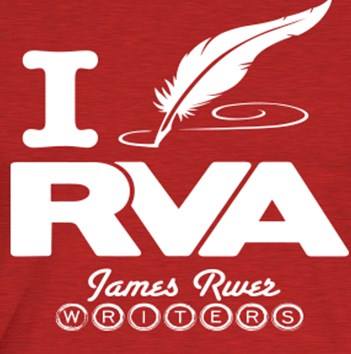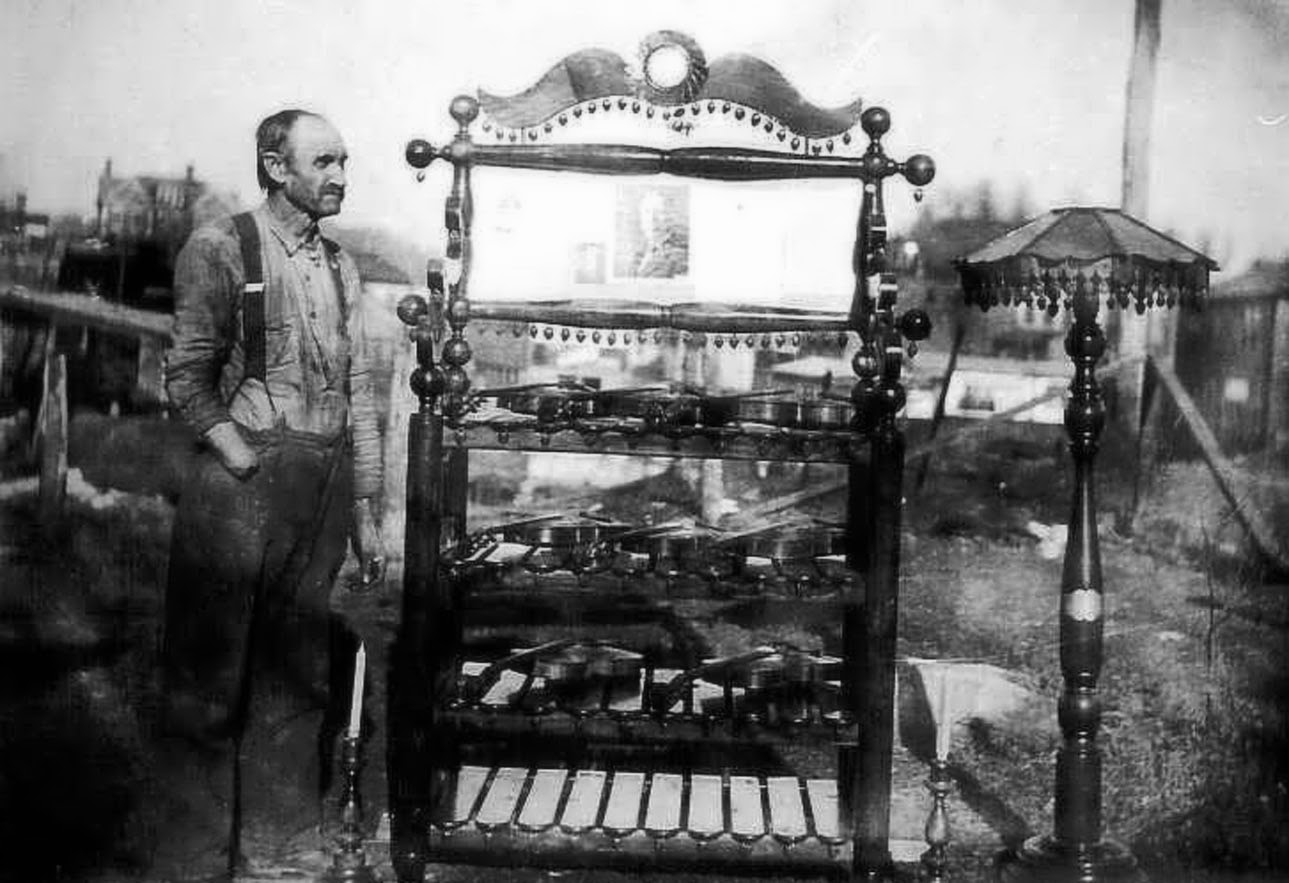_______________
Confessions of a Second Grade Failure
Wowie Kazowie!
My early shot at fame came in the winter of 1970 when my mom got tickets for me to attend the most
watched TV show in Kingsport for 9 year-olds - Bozo’s Big Top. The show had just debuted on our hometown’s newest, and only, TV station: WKPT, an ABC affiliate. Of the three cities in northeast Tennessee which made up the Tri-Cities, we were the last to have our own channel. Johnson City was the first to get a TV station in 1953, a CBS affiliate, WJHL. Bristol was the second city to do so in 1956, an NBC affiliate, WCYB. For several years, these two stations split the ABC shows between them. But on August 20, 1969, Kingsport’s own Channel 19 came into being.
The 1960s were the heyday for Bozo the Clown. This ubiquitous clown was created in the 1940s by Alan Livingston and whose rights were bought out by one of his own Bozo stand-ins, Larry Harmon, who became the quintessential Bozo. At a time when many TV shows were syndicated, Harmon decided to franchise the Bozo TV show. This meant that TV stations across the United States, and even other countries, had their very own Bozo the Clown shows, much like many local stations had their own version of Romper Room.
Kingsport’s very own Bozo was Rusty Cury, who was tapped by the station to play the lead role. Cury went to clown school in New York to prepare for the role. He was given lessons in becoming a proper Bozo by non-other than Harmon himself. For three days, he was trained how to be the perfect Bozo - what costume to wear, how to apply makeup, which Bozo gestures to use, and even how to speak and laugh like Bozo, a certain speech pattern and tone which Harmon himself had perfected.

Cury’s job to launch Bozo’s Big Top was not easy. WKPT was still very new and didn’t have a lot of money to spend on advertising the show’s debut. So at first, Cury dressed up as Bozo and walked Kingsport’s street to recruit kids for the live audience. But soon after the show began to air, getting an audience was not a problem. People started calling in to ask if their kids could be on the show. That’s what my mom did to get me on. In the time that the show had debuted, I had become one of Bozo’s biggest fans. Every day I would tune in to WKPT at 4 p.m. after getting home from school to watch the show. It soon became my dream to be in the audience, just like the kids who I saw on TV. Good ol’ Mom made it happen.
When the day finally arrived, I was beside myself with excitement. Mom picked me up from school and we drove downtown to Commerce Street where the station was located. On the short trip there, Mom lectured me about controlling my excitement and being on my best behavior. When we arrived, Mom parked the car on the street and put enough money in the parking meter to get us through the show.
We entered the door on the ground entrance and were told to take the stairs to the second floor. Once there, we stood on a landing outside a locked door to the TV studio. We were there early, so I was right next to the door. Other kids and their parents stood behind us or on the stairs. The waiting was so hard - I thought that I would just explode. We were so close to seeing Bozo, but this locked door barred our way. It seemed to take forever, but finally a lady from the station came out and told us that it was time for us to come into the studio.
On TV, everything looked so big. I had imagined a very large and brightly lit room. But my first impressions were about how small the room actually was. How could such a room be the home of the Bozo show? Also, I was struck by how dim the studio appeared. The walls were covered by dark curtains. The only thing that was lit was the small Bozo set which was up against one wall. And then there was the issue of the camera - there was just one. I thought TV studios were probably filled with several cameras, at least three or four, but the Bozo show had just the one.
The twenty or so of us kids were led onto the show’s set. We were seated on bleachers which were
 |
| A shot from the actual set of WKPT's Bozo Show. |
framed by a painted wooden outline of a circus train, in keeping with the theme of the show, Bozo’s Big Top. We were then each given a special Bozo tag with our very own name already printed on it so that if we were called upon, Bozo could call us by name. I was just grateful to be a member of the audience. Never in a million years would I have imagined that Bozo might actually speak to me - that he would know who I was. I mean if Bozo knew your name, then maybe you could be his friend. Friends with the big clown - nah, that was just too much to imagine or hope for. Better to just fit in with the crowd and concentrate on not falling off the top of the bleachers where I was seated.
After we were prepped for the show - what to expect, how to behave, what to do, what not to do and the like - it was time for the show to actually begin. Into the studio came the famous clown himself. What struck me first was how big Bozo was - for a nine year-old - he seemed very tall. There was the wing-tipped, big orange hair that stuck out from the sides of his head. His face had big eyebrows, a big red nose and a large red smile painted over his mouth.
Bozo’s neck was covered with what looked like a miniature blue and white cape that draped over his
chest, shoulders and back. His costume was blue and had large white furry balls adorning his shirt. Around his waist was a bright red sash. But what really blew my mind were the size 18 clown shoes he wore. How could anybody walk, much less dance, in shoes that big, I wondered. If the studio was smaller than I had imagined, Bozo more than made up for it by how large he appeared in real life.
The show’s producer started the countdown with his hand - three, two, one… we were live on TV. The camera panned the children in the audience as music played in the background. The song was by the Beatles - the “Yellow Submarine.” I couldn’t help but look at the monitor which was near the camera, waiting to see myself as the camera zoomed in. And in a moment, there I was front and center in the middle of the top tier of the bleechers.
“Wowie Kazowie, boys and girls!” said Bozo as he waved at the camera. That’s what he always said when the show opened. Bozo talked to the camera some more, then he turned and welcomed us to the show. Next, Bozo introduce a cartoon. Bozo usually had two or three cartoons each episode. They were always about his circus adventures.
After the cartoon and a commercial break, Bozo had the kids play a game in the studio. We formed two lines. We had to take off our shoes and put them in a big pile. The object of the game was to have the kids race each other to the pile, find their shoes, put them back on and then race back so that the next kid in line could go. The first line of kids to put on all their shows was the winner. I liked this game a lot. We played it at school sometimes when Mrs. Dobyns, our gym teacher, came. I don’t remember if my team won or not, but I do remember how much fun it was to play, especially with Bozo egging us on.
After the game was over, another commercial aired and we went back to our seats on the bleachers.
What came next was the pivotal moment of the show. It was time for the Grand Prize Game when one kid would be chosen from the audience to play a special game. If you were the one chosen and actually won the game, then you were given the grand prize - Bozo’s Treasure Chest. The Treasure Chest was a very large box on wheels filled to overflowing with the coolest games and toys you could ever imagine. Dozens and dozens of games and toys were in the chest. It was the dream of every girl and boy to win the grand prize and take home all the loot.
The Treasure Chest was rolled in by Bozo’s sidekick, Slappy Pappy, played by J. C. Mullins, who pushed the box out onto the set and right into Bozo’s posterior. “Whoa, Nellie!” Bozo exclaimed. I laughed at it even though Slappy Pappy always bumped the Treasure Chest into Bozo’s behind. Bozo then explained what the special game of the day was. On this particular day, it was the Bozo’s Nose Throw. The Nose Throw consisted of a wooden paddle in the shape of Bozo’s head with a big round shape on the side of the paddle painted red - i.e. Bozo’s Nose. Attached to the paddle by a string was a plastic ring. The object of the game was - with one hand - to get the plastic ring to hook on the nose part of the paddle. What came next was wholly unexpected - and held the possibility of altering my life forever.

After Bozo had introduced the Grand Prize Game and then revealed the Treasure Chest, there was only one thing left to do - choose who would play the game. Background music began to play. On the monitor, a white circle appeared above a shot of the kids in the studio audience. As the music played, the circle began to move. First it would surround one kid’s face, then it would move and do the same for another kid. It kept moving from child to child, row to row. Then the music stopped and, lo and behold, the circle had finally landed on just one kid. Yes, indeed - on that particular day, on that specific episode, I, Stevie Rhodes himself, was chosen to compete for the Grand Prize of winning all the toys in Bozo’s Treasure Chest.
I was stunned at first. My eyes grew big and my mouth hung open. I sat there frozen. But then, as in a dream, I heard my name called. It was Bozo. He was speaking to me and inviting me down out of the audience to play. Lightheaded, I stood up, wondering how I was going to get down to the floor from the top of the bleachers. But before me, the crowd parted with kids leaning left and right to create a space for me to step down, and down I went.

When I reached the studio floor, Bozo reached out and put his hand on my shoulder. In his other hand, he held the Bozo’s Nose paddle. He once more explained how the game work and then asked if I understood. I nodded my head “yes” because I was just way too nervous to speak. Then Bozo gave me the paddle which I held in my right hand. I understood that I had three chances to get the plastic ring on the nose part of the paddle. My heart pumped away and I felt the blood rushing through my body. “Okay,” I said to myself, “I can do this.” Then Bozo told me it was time for the first try. Music once more filled the background. I raised my right hand, quickly pushed my hand out in a scooping fashion. The plastic ring flew up and the string tightened, but the nose on the paddle remained empty.
“Be calm,” I told myself, “I’ve got two more chances.” And with that I focused in on my task at hand. Once more I thrust my hand, scooped with the paddle and the ring flew upward. And once again, I missed my mark.
Down to my last chance. Everything rode on what I did next. All I could think about was all those toys and games in the box, and being able to take all of them home and show them off to all my friends. I steadied my hand, my eyes burned with determination, and for the last time I made a scooping motion with my hand, the ring shot up, the string tightened, and for just a second, the ring appeared to head directly for the nose. But alas, it was not to be. The ring hit the nose and promptly bounced off. Close, but no cigar.
All of my breath seemed to leave me. I was stunned. I couldn’t believe that I had lost. I handed the
paddle back to Bozo. The great clown comforted me in my loss and then quickly handed me my consolation prize - a measly can of Pick-Up Sticks. I was then ushered back to my seat in the bleachers.
I don’t remember much about the remainder of the show. I was too focused on my loss of fame and fortune. All I really remember is Bozo closing the show with his catch phrase, “Always keep them laughing!” Then it was all over and I found myself back in the car with Mom. She did her best to cheer me up - after all, she pointed out, I had been on TV, and that was something special.
On the ride home, I resolved to give my 3 year-old brother, Ken, my consolation prize. I sure didn’t want them and it would make up for him not being old enough to go on the show with me. When I told Mom what I planned to do, she said “no.” Ken was too young for the game and the sticks were just too sharp. He might put his eye out with one of them.
So I kept the Pick-Up Sticks as a memento of my moment of near glory. But I put them in the back of my toy closet so as to not have to remember too often just how close I had come to bringing home the contents of the Treasure Chest.
Not all was lost, however. I did get to meet my hero of afternoon TV and he did call me by name. How many 9 year-old kids in Kingsport could say that!





























.jpg)








